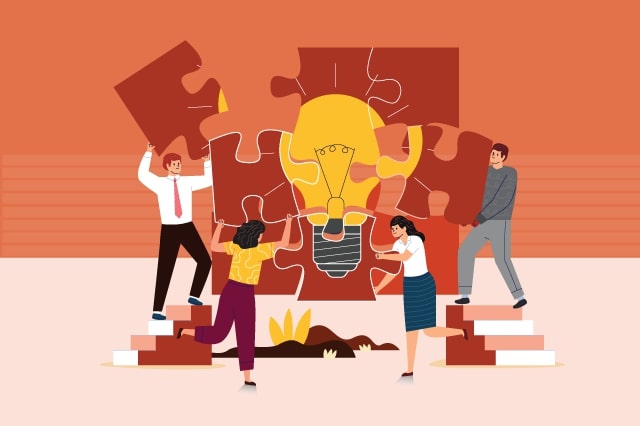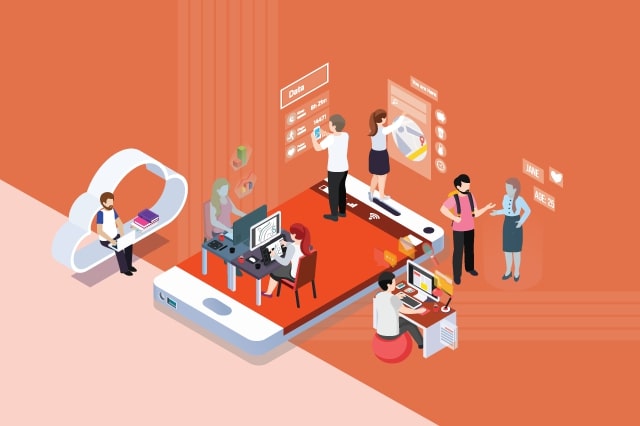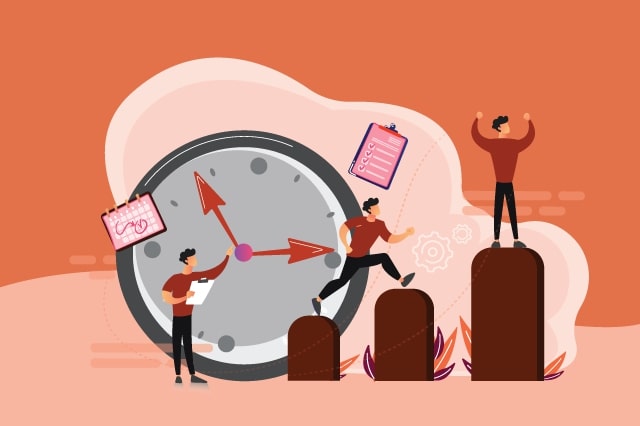
Leading a team, whether it consists of 10 employees or 100, is never an easy task. Grouping diverse people with different temperaments can often lead to miscommunication and clashes and can impact workplace productivity. Getting them on the same page is different, but making them work together to achieve a common goal is no small accomplishment.
During any work week, even the best teams run into roadblocks that impede efficiency. Ineffective meetings, email bloat, and not knowing what everyone else is working on can stop your team from crossing items off your to-do list and doing them well.
Building teams, achieving goals and upholding the work and the motivation flowing aren’t easy with so many of us still working from home and/or moving to a hybrid model. We’re all scrutinizing for new strategies to keep the team buzzing together.
What is Team Productivity?
Productivity describes how much a team or an individual creates as output. For individuals, it is signified by how much work they can accomplish within a single day. Team productivity is the number of assigned tasks that team members have completed at the company level. In queue-based roles, such as support, it also refers to the number of conversations or tickets handled in a day.
For many companies, an employee's productivity is equally related to their worth. If an employee is highly productive and consistently contributes to the company's mission, they will progress in their career more swiftly than someone who does not. Hence, productivity benefits the company as well as the employee.
How to Increase Productivity at Work?
Increasing productivity is more a process or procedure of how much you can empower your team. Empowered and confident employees accomplish more and are more productive than those who aren't. To improve team efficiency, an organization needs to reduce the barriers to high-impact work that its team faces on a daily basis.
According to the Anatomy of Work, global employees spend the majority of their time (60%) on normal work, and 27% of their time on skilled work. When you improve team efficiency, you give your team more time to focus on the most important tasks.
10 Ways To Boost Your Team Efficiency and Productivity
Read on Here are ten ways to empower and enhance team productivity.
1. Prioritize work based on key results
On any given day, your employees may have different tasks to complete across numerous projects. At this point, each of your employees seems to be important and urgent. Where should they begin? Where should they devote the bulk of their time? How does the brainpower do its best work?
Eventually, some projects and tasks are more important than others. That’s where well-defined goals and an idea of how your work ladders up to them come into the picture. An employee’s shorter-term goals provide an organizational foundation for longer-term goals, such as a release management plan or product roadmap. Having a clear vision of aligned tasks with the company- or department-wide goals helps keep everyone on the same page and delegates individual team members to make decisions that impact the big picture.
2. Delete, defer, delegate, or diminish
There will be times when your employees have too much on their plate. And without a proper system to help them delete, defer, delegate, or diminish lower-priority work, their work efficiency will deteriorate.
An organization can improve employees’ efficiency at work and increase workplace happiness with good workload management. One of the easiest ways to manage a team’s workload is to delete, defer, delegate, or diminish lower-priority tasks.
Take a look at your project and pinpoint what work needs to be done through an assessment and which tasks are a priority:
a. If a project aspect does not support an overarching organizational goal—delete it.
b. If there is a project with an impact on team goals, complete that task and defer an unimportant task for when you have time to tackle it.
c. If there are two tasks of equal importance, delegate one of those tasks to another team member.
d. If you can’t defer, delete, or delegate, find a way to diminish the time a task takes to complete. Eliminate, shorten, or reduce the frequency of these meetings. One can work on the highest priority features of a project and defer the rest until later.
3. Improve meeting efficiency
Teams can get significant work done when they meet together. But no matter what type of conference and engagements you’re planning, there are some ways to make it more actionable, effective, and productive:
Develop an agenda before the meeting: To enhance team efficiency, make sure every meeting has a goal. Design, develop, and share a meeting agenda so everyone is on the same page. If there are any supplemental documents, share them in the agenda.
Align on meeting conventions: Whether you’re meeting virtually or in person, define and share group norms for your company. Should the video be turned on if it's a virtual call? Who goes first, if multiple people have something to share?
Take actionable notes: Before the meeting begins, assign a person to take meeting notes. Along with notes, grasp action items with due dates and assignees.
Collect feedback to increase efficiency: Keep checking regularly with your team to make sure meetings feel valuable to them. If employees are getting a lot out of particular meetings, continue moving that sync to a digital update or project status report.
4. Encourage cross-functional collaboration
Work management tools can improve cross-team visibility by linking each phase of a project to a single goal. These tools can serve as a centralized epicenter to share what you’re working on with the rest of the team and determine areas where people with various responsibilities can collaborate.
5. Monitor Progress
Keeping track of your team's projects and their progress toward accomplishing them. Asking people to share their assistance with the group can be a great way to encourage ownership and responsibility for tasks.
Set deadlines and track how employees are moving up to them. Ask team members to create smaller steps to move toward the larger goal, and then ensure that they report on their status and move toward your target completion date.
6. Create a healthy work environment
When you promote a life beyond work and ensure that your team members are taking time to enjoy it, they can come back to the office revitalized and ready to work hard. The more you emphasize work and demand extra-long hours from your team, the closer they will be to burnout.
7. Ensure proper communication
Communication plays an important role in helping team members to comprehend their job responsibilities. And, if there is any communication gap, it can lead to ambiguity within a team, which will undoubtedly affect the overall productivity of a team. Whether you onboard new employees or deliver employee training, consider creating an online lecture to keep everyone aligned.
8. Be authentic and vulnerable
Create an atmosphere of trust and honesty within your team, so employees feel more comfortable discussing their problems. Having a public vulnerability with your team shows them that it is okay to admit you don't know something or need assistance.
9. Set a north star
A "North Star" metric is a standard that is the most viable to indicate the success of a team. North Star metric may include the following:
a. First contact resolution
b. Time to first response
c. Customer satisfaction (CSAT)
d. Customer effort score (CES)
Suppose your organization sets a North Star metric of the number of customers and wants to increase from 10,000 to 30,000 customers in a year. These goals may be strictly related to:
Time to first response
Renewal rate
Customer satisfaction
10. Celebrate team wins and failures
Don’t forget to acknowledge and celebrate your team’s successes and failures and commend their willingness to take calculated risks. Failure is an opportunity to learn, grow, and become more productive. Create an environment where it’s fine to take risks and fail. Concentrate on lessons learned and what to try subsequent time. The rest of the team will learn from noticing something that didn’t work.
Conclusion
Improving employee efficiency is a continuous process. It looks overwhelming, but simple tools and tactics can assist your team more efficiently. And the more articulate you and your team become in using these tools, efficiency becomes second nature and a built-in component of any project.
Take your efforts to enhance productivity gradually and with control. Remember, the more involved every team member feels in decision-making and action, the more productive they will be.
About Author:
Priyanka Madhala is the Head of Talent Acquisition at Chimera Technologies.


